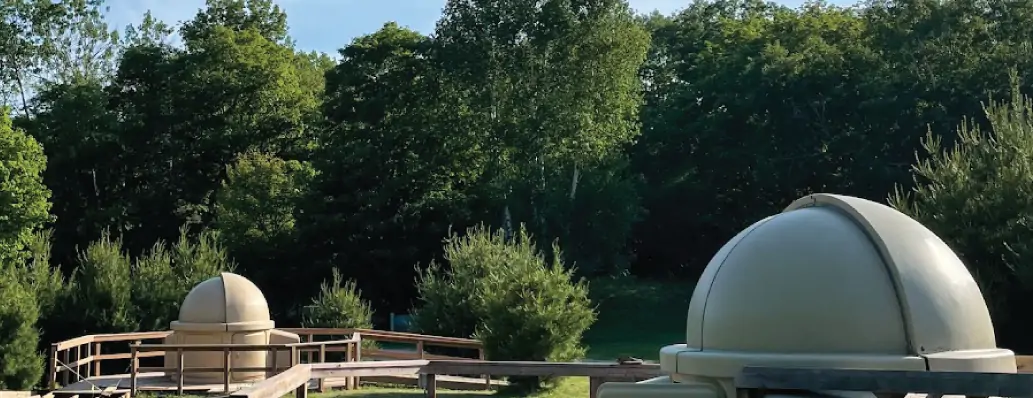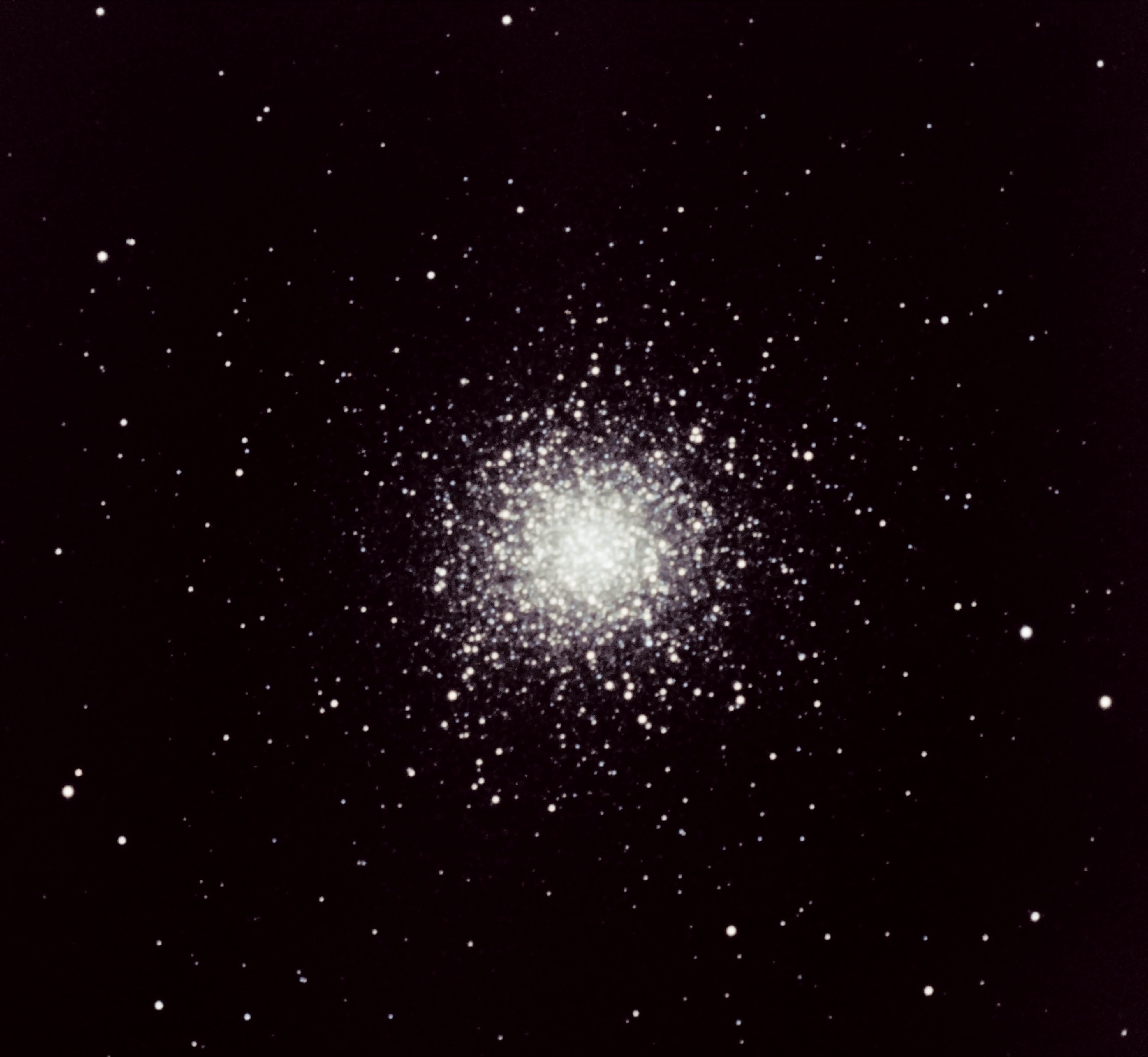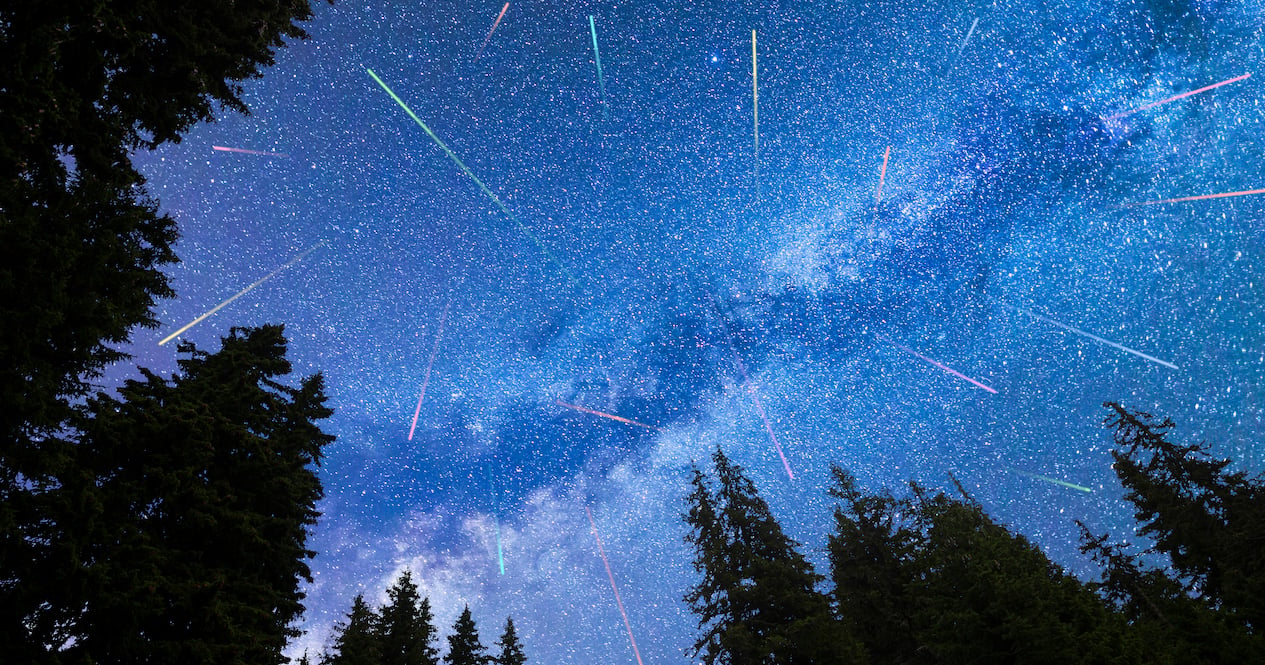Science
SpaceX sets new record with historic launch – Excalibur Online

On Sunday, January 24, at 10 a.m. EST, SpaceX set a new record as they launched 143 satellites into space using just one rocket. This record was previously held by PSLV (an Indian rocket), which in 2017 sent 104 satellites into space with one launch.
This historic launch of SpaceX’s Falcon 9 rocket, which was originally planned for January 23, had to be pushed back 24 hours due to bad weather in Florida that day. The rocket lifted off from Cape Canaveral Space Force Station launch pad, and made its way to a nearly 524-kilometre-high orbit around the Earth’s poles — a rare trajectory for this launch site.
Transporter-1 is a SpaceX rideshare mission, which was first introduced to the world in 2019. SpaceX’s SmallSat Rideshare Program essentially acts as an affordable carpool-like system for satellites starting at US$1 million for nearly 200 kilograms. Satellites of all different sizes and shapes were carried at Sunday’s launch, ranging from miniature sized CubeSats to the more weighty Microsatellites.
“I think it’s great that Elon Musk is doing so much to increase accessibility to space, making it seem like an attainable goal,” says first-year computer science student Armani Araujo.
“I hope that his satellites’ uses expand into other areas, such as making the internet more affordable than the overpriced options we currently have.”
The rideshare program is beneficial to those wishing to launch satellites into space, without the expense of purchasing their own rocket. Among the flight were communication satellites for Kepler Communications, a company based in Toronto. Others include satellites for the U.S. and Europe by a German-based company Exolaunch, Planet Labs, D-Orbit, Spaceflight Inc, NASA, and Capella Space, and many more.
Also on this ship were 10 Starlink satellites. These are the first in the constellation to deploy to a polar orbit.
“Only 10 were launched Sunday and they joined the over 1,200 already launched. There is no doubt that the thousands of satellites expected to be deployed will pose a challenge to astronomers worldwide,” says York Professor and Director of the Allan I. Carswell Observatory, Paul Delaney.
While Starlink has many advantages, such as bringing high-speed internet to rural areas, it may negatively impact some astronomers’ view of space depending on their astronomy field.
“These satellites in low Earth orbit (LEO) will reflect light and cause light streaks across time exposure images from ground-based observatories,” adding, “this will compromise some of our data collection processes,” says Delaney.
Scientists who need to look past Neptune for distant objects may experience difficulty after Starlink is completed. There is also fear that this will delay us from being notified of incoming comets.
“Astronomers and SpaceX are working on mitigation strategies and are having some success with darker, less reflective surfaces for example. It is unfortunate these measures and interactions between astronomers and companies did not occur before the launch of the satellites,” says Delaney.
SpaceX hopes to have 12,000 satellites orbiting earth for the future. When asked about the longevity of SpaceX’s program, Delaney remarks, “Given the seemingly unlimited demand modern society has on bandwidth, these constellation satellites are here to stay for quite a while.”
Also aboard the ship were the ashes of Dr. John Caldwell, a professor emeritus from the department of physics and astronomy, who sadly passed away in December 2019. Caldwell was an astronomer and a colleague of Delaney’s for nearly 35 years — they even worked on the Hubble Space Telescope and the Kepler Space Telescope together. On Sunday’s launch, Caldwell’s ashes were released into space.
We are living in a somewhat early age for space exploration. Delaney points out that it is likely space tourism will rise, as SpaceX has made plans to carry passengers to the ISS, in partnership with Axiom.
Science
Asteroid Apophis will visit Earth in 2029, and this European satellite will be along for the ride

The European Space Agency is fast-tracking a new mission called Ramses, which will fly to near-Earth asteroid 99942 Apophis and join the space rock in 2029 when it comes very close to our planet — closer even than the region where geosynchronous satellites sit.
Ramses is short for Rapid Apophis Mission for Space Safety and, as its name suggests, is the next phase in humanity’s efforts to learn more about near-Earth asteroids (NEOs) and how we might deflect them should one ever be discovered on a collision course with planet Earth.
In order to launch in time to rendezvous with Apophis in February 2029, scientists at the European Space Agency have been given permission to start planning Ramses even before the multinational space agency officially adopts the mission. The sanctioning and appropriation of funding for the Ramses mission will hopefully take place at ESA’s Ministerial Council meeting (involving representatives from each of ESA’s member states) in November of 2025. To arrive at Apophis in February 2029, launch would have to take place in April 2028, the agency says.
This is a big deal because large asteroids don’t come this close to Earth very often. It is thus scientifically precious that, on April 13, 2029, Apophis will pass within 19,794 miles (31,860 kilometers) of Earth. For comparison, geosynchronous orbit is 22,236 miles (35,786 km) above Earth’s surface. Such close fly-bys by asteroids hundreds of meters across (Apophis is about 1,230 feet, or 375 meters, across) only occur on average once every 5,000 to 10,000 years. Miss this one, and we’ve got a long time to wait for the next.
When Apophis was discovered in 2004, it was for a short time the most dangerous asteroid known, being classified as having the potential to impact with Earth possibly in 2029, 2036, or 2068. Should an asteroid of its size strike Earth, it could gouge out a crater several kilometers across and devastate a country with shock waves, flash heating and earth tremors. If it crashed down in the ocean, it could send a towering tsunami to devastate coastlines in multiple countries.
Over time, as our knowledge of Apophis’ orbit became more refined, however, the risk of impact greatly went down. Radar observations of the asteroid in March of 2021 reduced the uncertainty in Apophis’ orbit from hundreds of kilometers to just a few kilometers, finally removing any lingering worries about an impact — at least for the next 100 years. (Beyond 100 years, asteroid orbits can become too unpredictable to plot with any accuracy, but there’s currently no suggestion that an impact will occur after 100 years.) So, Earth is expected to be perfectly safe in 2029 when Apophis comes through. Still, scientists want to see how Apophis responds by coming so close to Earth and entering our planet’s gravitational field.
“There is still so much we have yet to learn about asteroids but, until now, we have had to travel deep into the solar system to study them and perform experiments ourselves to interact with their surface,” said Patrick Michel, who is the Director of Research at CNRS at Observatoire de la Côte d’Azur in Nice, France, in a statement. “Nature is bringing one to us and conducting the experiment itself. All we need to do is watch as Apophis is stretched and squeezed by strong tidal forces that may trigger landslides and other disturbances and reveal new material from beneath the surface.”
By arriving at Apophis before the asteroid’s close encounter with Earth, and sticking with it throughout the flyby and beyond, Ramses will be in prime position to conduct before-and-after surveys to see how Apophis reacts to Earth. By looking for disturbances Earth’s gravitational tidal forces trigger on the asteroid’s surface, Ramses will be able to learn about Apophis’ internal structure, density, porosity and composition, all of which are characteristics that we would need to first understand before considering how best to deflect a similar asteroid were one ever found to be on a collision course with our world.
Besides assisting in protecting Earth, learning about Apophis will give scientists further insights into how similar asteroids formed in the early solar system, and, in the process, how planets (including Earth) formed out of the same material.
One way we already know Earth will affect Apophis is by changing its orbit. Currently, Apophis is categorized as an Aten-type asteroid, which is what we call the class of near-Earth objects that have a shorter orbit around the sun than Earth does. Apophis currently gets as far as 0.92 astronomical units (137.6 million km, or 85.5 million miles) from the sun. However, our planet will give Apophis a gravitational nudge that will enlarge its orbit to 1.1 astronomical units (164.6 million km, or 102 million miles), such that its orbital period becomes longer than Earth’s.
It will then be classed as an Apollo-type asteroid.
Ramses won’t be alone in tracking Apophis. NASA has repurposed their OSIRIS-REx mission, which returned a sample from another near-Earth asteroid, 101955 Bennu, in 2023. However, the spacecraft, renamed OSIRIS-APEX (Apophis Explorer), won’t arrive at the asteroid until April 23, 2029, ten days after the close encounter with Earth. OSIRIS-APEX will initially perform a flyby of Apophis at a distance of about 2,500 miles (4,000 km) from the object, then return in June that year to settle into orbit around Apophis for an 18-month mission.
Related Stories:
Furthermore, the European Space Agency still plans on launching its Hera spacecraft in October 2024 to follow-up on the DART mission to the double asteroid Didymos and Dimorphos. DART impacted the latter in a test of kinetic impactor capabilities for potentially changing a hazardous asteroid’s orbit around our planet. Hera will survey the binary asteroid system and observe the crater made by DART’s sacrifice to gain a better understanding of Dimorphos’ structure and composition post-impact, so that we can place the results in context.
The more near-Earth asteroids like Dimorphos and Apophis that we study, the greater that context becomes. Perhaps, one day, the understanding that we have gained from these missions will indeed save our planet.

Science
McMaster Astronomy grad student takes a star turn in Killarney Provincial Park

Astronomy PhD candidate Veronika Dornan served as the astronomer in residence at Killarney Provincial Park. She’ll be back again in October when the nights are longer (and bug free). Dornan has delivered dozens of talks and shows at the W.J. McCallion Planetarium and in the community. (Photos by Veronika Dornan)
BY Jay Robb, Faculty of Science
July 16, 2024
Veronika Dornan followed up the April 8 total solar eclipse with another awe-inspiring celestial moment.
This time, the astronomy PhD candidate wasn’t cheering alongside thousands of people at McMaster — she was alone with a telescope in the heart of Killarney Provincial Park just before midnight.
Dornan had the park’s telescope pointed at one of the hundreds of globular star clusters that make up the Milky Way. She was seeing light from thousands of stars that had travelled more than 10,000 years to reach the Earth.
This time there was no cheering: All she could say was a quiet “wow”.
Dornan drove five hours north to spend a week at Killarney Park as the astronomer in residence. part of an outreach program run by the park in collaboration with the Allan I. Carswell Observatory at York University.
Dornan applied because the program combines her two favourite things — astronomy and the great outdoors. While she’s a lifelong camper, hiker and canoeist, it was her first trip to Killarney.
Bruce Waters, who’s taught astronomy to the public since 1981 and co-founded Stars over Killarney, warned Dornan that once she went to the park, she wouldn’t want to go anywhere else.
The park lived up to the hype. Everywhere she looked was like a painting, something “a certain Group of Seven had already thought many times over.”
She spent her days hiking the Granite Ridge, Crack and Chikanishing trails and kayaking on George Lake. At night, she went stargazing with campers — or at least tried to. The weather didn’t cooperate most evenings — instead of looking through the park’s two domed telescopes, Dornan improvised and gave talks in the amphitheatre beneath cloudy skies.
Dornan has delivered dozens of talks over the years in McMaster’s W.J. McCallion Planetarium and out in the community, but “it’s a bit more complicated when you’re talking about the stars while at the same time fighting for your life against swarms of bugs.”
When the campers called it a night and the clouds parted, Dornan spent hours observing the stars. “I seriously messed up my sleep schedule.”
She also gave astrophotography a try during her residency, capturing images of the Ring Nebula and the Great Hercules Cluster.

“People assume astronomers take their own photos. I needed quite a lot of guidance for how to take the images. It took a while to fiddle with the image properties, but I got my images.”
Dornan’s been invited back for another week-long residency in bug-free October, when longer nights offer more opportunities to explore and photograph the final frontier.
She’s aiming to defend her PhD thesis early next summer, then build a career that continues to combine research and outreach.
“Research leads to new discoveries which gives you exciting things to talk about. And if you’re not connecting with the public then what’s the point of doing research?”

Science
Where in Vancouver to see the ‘best meteor shower of the year’

Eyes to the skies, Vancouver, because between now and September 1st, stargazers can witness the ‘best meteor shower of the year’ according to NASA.
Known for its “long wakes of light and colour,” the Perseid Meteor Shower will peak on August 12th, 2024 – so consider this list a great place to start if you’re in search of a prime stargazing spots!
Grab your lawn chairs and blankets, and seek as little light pollution as possible. Here are some ideal stargazing spots to check out in and around Vancouver this summer.
Recent Posts:
This island with clear waters has one of the prettiest towns in BC
10 beautiful lake towns to visit in BC this summer
Wreck Beach
If you’re willing to brave the stairs and the regulars, it doesn’t get much better than Wreck Beach for watching the skies – for both sunsets and stargazing. The west-facing views practically eliminate immediate distractions from the city lights.
Spanish Banks Park
Spanish Banks is the perfect mixture of convenience and quality. Its location offers unobstructed views of the skies above, and it’s far enough away from downtown to mitigate some of the light pollution.
Burnaby Mountain Park
If it’s good enough for a university observatory, it’s good enough for us. Pretty much anywhere on Burnaby Mountain will offer tremendous viewpoints, but the higher you get the better (safely).
Porteau Cove
A short drive from Vancouver gets you incredible views of the Howe Sound from directly on the water. And naturally, its distance from any nearby community makes it a prime spot for stargazing.
Cypress Mountain
In addition to having one of the best viewpoints in Vancouver period, Cypress Mountain (and the road up to it) is also a great place to watch the sky. For a double-whammy, we say that you come around sunset, then hang out while the sky gets dark. Sure, it might take a few hours, but the view is worth it.
So there you have it, stargazers! Get ready to witness a dazzling show this summer.

-

 Health17 hours ago
Health17 hours agoEssential Keto Cookbook Digital Plus Bonuses ($9.95) (PPU: 50232)
-

 News18 hours ago
News18 hours agoMidnight Mascot installed as early favourite for $400,000 Prince of Wales Stakes
-

 News15 hours ago
News15 hours agoJudge questions restrictions on booster payments to athletes in $2.78B NCAA settlement
-

 Business18 hours ago
Business18 hours agoCat Spraying No More – How to Stop Cats From Urinating Outside the Litterbox!
-

 Sports13 hours ago
Sports13 hours agoUS Open: Jessica Pegula beats Karolina Muchova and will face Aryna Sabalenka in the women’s final
-

 Economy3 hours ago
Economy3 hours agoRecent immigrants shut out of strong wage growth as unemployment rises in Canada
-

 Health20 hours ago
Health20 hours agoCollagen Benefits | BUBS Naturals
-

 News18 hours ago
News18 hours agoLiberals’ national campaign director Jeremy Broadhurst resigns




















